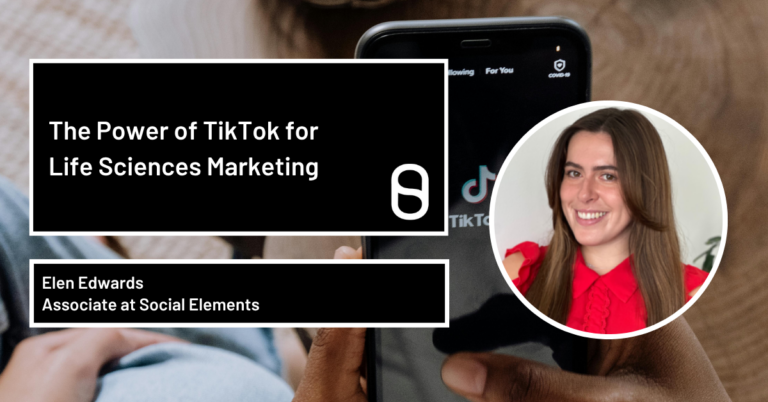Do you find yourself sitting at your computer or with phone in hand wondering what on Earth you should post onto social media today? Do you find yourself posting social content that isn’t entirely relevant just for the sake of it? Are you just posting about yourself and your business? Do you feel a bit lost? That’s because you don’t have a social media strategy in place? Trying to build your brand on social media without a social media strategy can be a total waste of time. You’ll see no return from your efforts and lose faith in social media entirely.
In this latest blog entry, I’ll be talking you through the 8 stage process you need to go through before you even begin to start posting social media content.
A social media marketing strategy is a summary of everything you plan to do and hope to achieve on social media. It guides your actions and lets you know whether you’re succeeding or failing.
Step 1: What are your social media objectives?
The first step is to establish your business objectives and your social media goals. Ensure that these goals are SMART, specific, measurable, achievable, realistic and timely. Without these, you have no way of measuring your success or return on your investment. This is also important if you have outsourced your social media. For example is your social media goal to increase brand awareness or do you want to drive more sales? Be realistic and take into consideration your time and budget.
Step 2: Define your target audience.
Knowing who your target audience is and what they want to see on social media is key to creating content that they will like, comment on, and share and most importantly be seen on social media. It’s also critical for planning how to develop your social media fans into customers for your business. Try creating audience personas, imaginary people if you will. Are they married? Have children? What sort of jobs do they have? When are they likely to be looking at social media? Get to know these people and in turn that will allow you to think more clearly about what to offer them.
Step 3: Which platforms?
Once you have identified these ideal people start to think about where you can find these customers? Is it on Facebook, LinkedIn, Twitter, Instagram or Pinterest? Have a think about the various characteristics of these platforms and don’t just pick one because you like using it. Pick a platform that will work for you. I will be posting another blog soon about the pros and cons of each platform. I tend to recommend that a business focus on two main social media platforms and have a third as a tertiary one. However, it’s also important to be realistic. If you only have the time to manage one, then do that, but do it well.
Step 4: Defining your brand.
Before you start posting think about your brand identity. Instagram, especially provides excellent opportunities for your brand identity to shine. Think about your brand colours and fonts and try to be consistent with those. Utilize some of the great filters that are available on Instagram but remember that consistency is key. This great article from The Preview App has some great ideas.
Also, think about your tone of voice. Do you want to be quirky and fun, informative and serious? Think about your audience and how they want to be spoken to. For some great ideas of brands using tone effectively visit @Innocent or @birchbox
Step 5: Posting strategy
Your social media content should be made up of curated (content that isn’t your own) and created content (content that you create). The ratios of both depend on which platform you are using. Using your user personas look for common elements or talking points between them. What would engage them? Think of 5 – 6 main categories and list them in order of importance. For example, if you are a children’s brand your topics might be your products, activities to do with kids, recipes, party ideas and educational news pieces. Remember the golden rule that your content should add value to your audience. Look at when your audience is online and make sure that you post your content at these times. There are lots of social media scheduling tools out there, which enable you to prepare content ahead of time and schedule it to post at times that are right for your audience rather than convenient for you, so pick one that works for you. Alternatively, you can post natively within the apps.
Step 6: Social media review
It’s important to look at who your competitors and influencers are and what they are doing. If you like what they are doing then you might get some ideas and if you don’t, well, that’s good to know as well. It’s also useful to know how many followers they have, what their tone of voice is, the types of content they are producing and how much engagement they are getting.
Step 7: Engagement
Social media is, at its heart, about being social. So it’s not enough to push out content and never converse with others. Engaging with others is a way to spark people’s interest in your product, see you as an approachable and knowledgeable presence within your area and think of you when their minds turn to purchasing. It’s important to know how all of the social media platform’s algorithmns work because this will inform your engagement strategy
Step 8: Measuring success
So you’ve decided upon your goal, defined your audience, are merrily posting content and engaging with your audience. But how do you know if what you are posting is working for you? You need to define your analytics in order to measure your success.
The trick is to track metrics that clearly demonstrate how social media is contributing to business results. These could include:
- Reach
- Audience engagement
- Site traffic
- Leads generated
- Sign-ups and conversions
- Revenue generated
There are lots of ways you can physically do this and each platform has an area for analytics.
It’s also a good idea to look at Google Analytics. It’s easy for your web developer to implement and it’s a really powerful tool to see, amongst lots of other things, how much traffic you are driving to your website.
I hope you’ve found this whistle-stop tour into how to create a social media strategy useful.
If you’d like to know more about my social media management services you can read more here



















